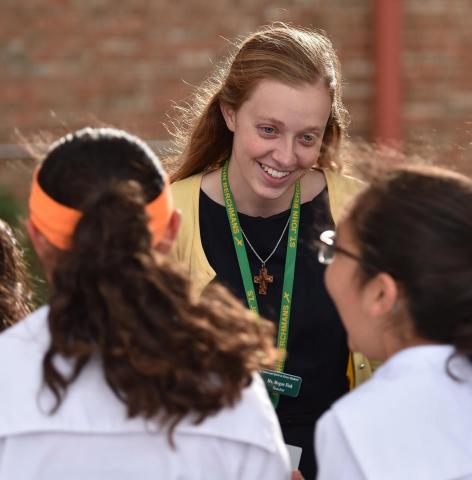7 Strengths of Super Readers Series // Friendship + Kindness

Friendship: Having close, trusting relationships and personal connections to others; learning to interact in positive, productive ways
While it may seem obvious to state that friendship matters, decades of research by Robert Selman has shown the incredible importance of friendship and how close relationships foster perspective-taking, or "the ability of young people to take into consideration other people's points of view." Individuals who have learned to assume and honor other people's points of view are more likely to better manage relationships in their own lives. Similar to belonging and curiosity, friendship goes far beyond literacy skills to helping children become empathetic, healthy, and joyful individuals. Let's explore how literature can nurture friendship!
"What We Can Do To Promote Friendship in School and in Out-of-School Programs begins with the power and magnificence of friendship courses its way through the greatest literature of our times, both classic and contemporary. Across cultures, languages, customs, and traditions, friendship's lasting value to society is clear."
We then challenge and invite educators to consider how literature can be used as a powerful resource for academic development.
Books can help children navigate all types of relationships–from gentle life-affirming ones in Mr. Putter and Tabby to texts written for older students that may show the complexity of relationships, such as in The Hunger Games. Just as important as the content and message of the book is the ways in which the books are read and experienced by the students. With a theme such as friendship, we can show the students how friendship is important for collaborative and personal development by carving out time for students to work together and engage in meaningful dialogue. Literature serves as a launching pad, a way to encourage thoughtful discussion and to make authentic connections with one another, which then impacts the ways children interact beyond literature discussions. We know that when children feel good about themselves, as members of a caring classroom where friendships are valued, they are able to learn and maximize their potential. We conclude with recommendations to create and promote a sense of friendship outside of school as well because children deserve to enjoy and foster friendships across every place they travel in their day.
10 Family Routines to Promote Friendship
1. Read books around the theme of friendship with your child.
2. Ask your child to share his or her favorite books.
3. Document acts of friendship in the community and the home.
4. Friendship Collage–Identify admirable qualities in family and friends.
5. Form a family or neighborhood book club.
6. Become a friend to an elderly person in your community.
7. Teach your children to greet neighbors and to ask them about their day.
8. Talk about the value of empathy.
9. Talk to your children about the importance of perspective-taking.
10. Adopt a soldier and send them regular cards and letters.
*Check out a list of texts that promote friendship on our Pinterest page.

Kindness: Being compassionate toward others, expressing tenderness that has an impact, near and far

When children or adults are under stress, the brain becomes a non-essential organ. The fight or flight instinct traces back to our wooly mammoth days. Let's face it, when the mammoth is invading your tent the last thing you need to do is think! We feel the blood rush to our stomachs and our limbs as the body prepares us for the worst. While this is often a life-saving instinct, facing fight-or-flight moments should happen just a handful of times in one's life, and not in the normal workings of a literacy classroom. When kids tell us they have butterflies in their stomach, they are describing this response. When they tell us they got scared and forgot everything, believe them. Stress reduces our ability to think! A kind environment filled with support and love is our only chance of developing children who love to read and who read well.
Resilience and grit have become buzzwords in education and with good reason. When students demonstrate resilience (persistence) or grit, they are more likely to overcome challenges. Closely related to resilience is happiness. When students feel happy, they are able to learn. As we think about the importance of kindness, let's keep in mind that resilience and happiness are closely linked to kindness. As adults, we have the awesome opportunity to model and encourage kindness for our students who in turn will extend kindness to one another.
Teachers and the learning environment can have a profound impact on how students develop and maintain resilience. By simply incorporating kindness between students and staff and encouraging kindness among students, children can develop resilience, which is directly connected to academic development.

How do we promote kindness in school? The first way is to read and teach about tenderness, to teach students to adopt varying points of view, and to then encourage students to experience a love of character(s). Through literature, students can try on different perspectives, see events from unique angles, and express tenderness. We can also be explicit and direct about recognizing and honoring acts of kindness in the classroom. Let's point out the child who shows empathy and says thank you. Let's be specific about how a child showed kindness and encourage others to see how they might replicate these acts to create a welcoming and nurturing learning environment for everyone.
Outside of school, families can recognize and reward acts of kindness. Just as teachers can be specific about acts of kindness in the classroom, families can do the same by finding innovative ways to measure and reward kindness. It is sometimes easy to overlook the child who consistently lends a hand to a sibling, is first to respond to a parent request, or notices ways to make other family members' lives easier. Let's make sure we are "catching" and rewarding acts of kindness–regardless of how seemingly small! Not only are we celebrating and showing appreciation for a child who showed kindness, but emphasizing to other family members how much we value kindness in the family and home.
To promote kindness at home, we share specific actions and activities such as creating a Kindness Hall of Fame and creating a running list of kindness actions each week. There are also routines that can promote kindness such as discussing difficult topics such as digital citizenship and how kids might express kindness online or by creating a philanthropy project based on a character in a book. Several suggestions incorporate current technology while also teaching a classic and highly valued characteristic – kindness.
10 Family Routines to Promote Kindness
1. Make time for affirmation.
2. Keep track of kindness you receive in your lives.
3. Encourage your child to do an act of kindness each day.
4. Find innovative ways to measure and reward kindness. (This list is readily adaptable to home!)
5. Develop a philanthropy project with your child inspired by a book.
6. Invite family members to write "anonymous" notes of kindness to one another.
7. Work on developing active listening skills.
8. FaceTime distant relatives to read to them.
9. Talk to your children about digital citizenship and being kind online.
10. Volunteer together as a family in a neighborhood organization.
*Check out a list of texts that promote kindness on our Pinterest page.
Happy Reading,
Ernest and Jodene

